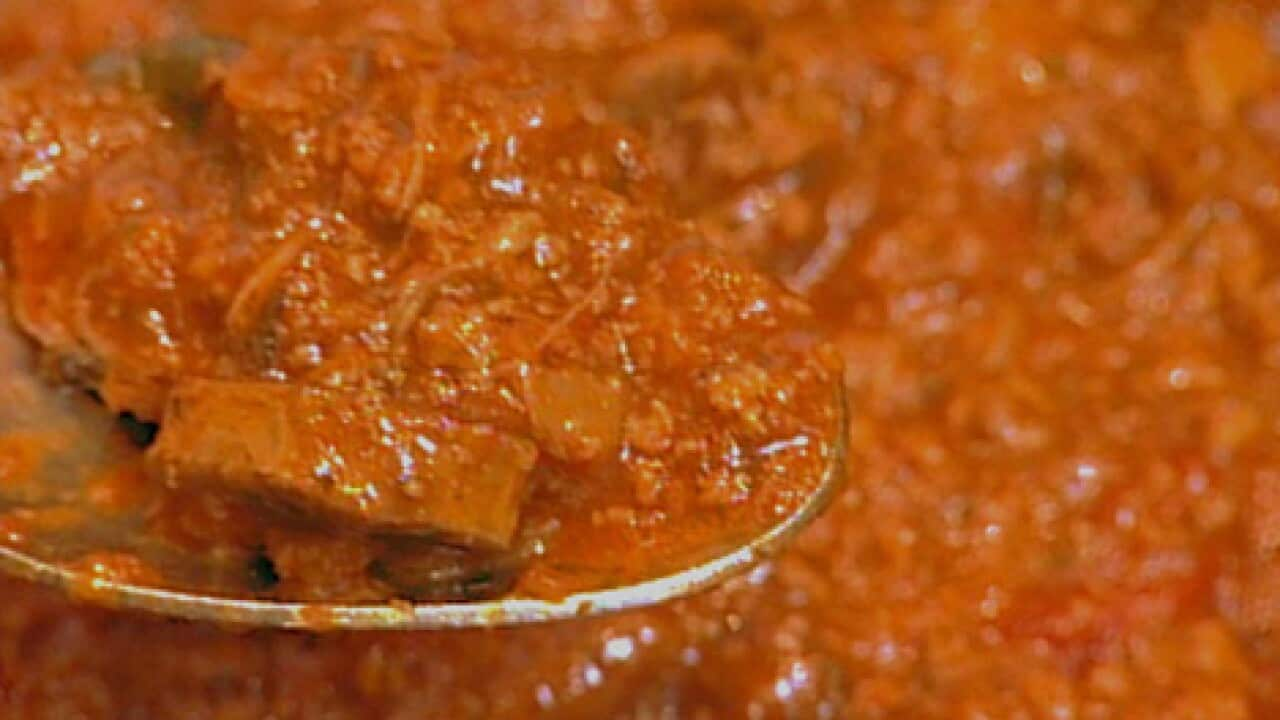--- airs weeknights on SBS (Ch.30) at 6.00pm and 7.00pm on SBS Food (Ch.33). All episodes available anytime on SBS On Demand. ---
Solemnly declared by the Bologna delegation of the Accademia Italiana della Cucina and deposited with notarial deed on the 17th of October 1982, the recipe for classic Bolognese ragù contains milk and white wine, tomato sauce or paste and specific cuts of meat.
So why don't many Italians, including native chefs, use milk in their ragù alla Bolognese?
For Australian-based chefs Mirko Grillini and Christian Folletti there’s no doubt; you need milk to make la vera Bolognese.
Italian-based Bolognese chef Gianluca Gangetti never adds milk to his sauce, and wine is regularly red. When replying to SBS's question “do you add milk at any point of the cooking process?” he immediately answered “No!”
“My nonna didn’t use it and I don’t recall using it at [1-Michelin-starred restaurant in Bologna] Ambrogio.”
On the other side of the world, Queensland-based celebrity chef Mirko Grillini told SBS that in Australia, he always teaches others to cook traditional tagliatelle al ragù the way his nonna used to.
“I always add a glass of whole milk.”
Melbourne resident chef and pasta maker Christian Folletti adds a litre of milk for every 600 g of meat.
“You don’t need to boil it for hours as nowadays, we can afford better cuts of meat, but you definitely need milk.”
So how do we make a traditional Bolognese sauce? To understand it, we need to travel to its capital.
Bologna is an Italian city at the cross between Florence, Venice and Milan, famous for her towers and known as la Signora (the Lady).
In every house, women constantly created new plates depending on ingredients they had available, and beef stews of any sort are reported back to the Roman age.
Italian food is often referred to as 'poor cuisine' as historically many dishes utilise the humble raw ingredients available, processed to obtain a meal for an extended family.
Beef, old cows cuts and pork scraps - as nothing could be wasted - were cooked on low fire for hours especially if the meat was tough. It's said that milk could have been used to smooth the taste of wild meat such as boar or other game.
Up until the 16th century, when tomato was imported into Italy from America, ragù was a simple stew made of poultry usually cooked with vegetables and lard. Wine was added depending on availability.
It was only in the 18th century that the Bolognese sauce turned into an Italian icon all over the world, thanks to the experience of foreign chefs stopping in Bologna, the influence of French cuisine – hence the word ragù, from French ragoûter, stew - and Romantic writers telling the world about the Bel Paese (beautiful country).
In our century, many variations of the recipe are accepted by Italian chefs all over the world. “You’ll hardly find the same tasting ragù in different restaurants across a single city, Bologna included” said Folletti.
However, a specific recipe for "classic Bolognese ragù" was deposited at the Chamber of Commerce of Bologna by the Italian Academy of Cuisine in 1982. The reason is that ten years earlier the recipe of tagliatelle was deposited naked, without a sauce.
“We wanted to worthily dress the tagliatella” explained professor Carlo Citrullo on that solemn day in October 1982.
The Bologna Deputy for the Italian Academy of Cuisine at the time stated his speech that “the recognition of ragù comes from the desire to strengthen a tradition that is not to be forgotten in the rush of our times.”
What it looks like a dogma – do we add milk or not, is it red or white wine? - is rather the starting point for people to create their own recipe, to be handed over to new generations.





